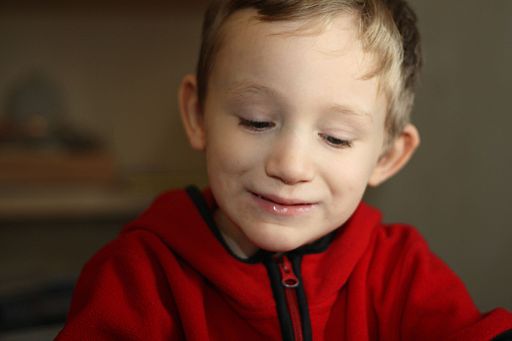Difference Between SPD and Autism
The increase in neurodevelopmental disorders like Attention deficit hyperactive disorder (ADHD), Sensory processing disorder (SPD), autism in our society has necessitated the urge to understand these conditions better and also to research them in detail for effective therapeutic intervention. Almost 5-16%percent children population is affected with SPD or sensory processing disorder and around 1% are affected with autism. The conditions are baffling for the caregivers and physicians alike. Since there is little knowledge about these conditions among the medical fraternity itself, many a time children are mislabelled with one or the other of the above diagnosis.
SPD and Autism may seem similar at the outset, but there are subtle differences which should be noted as they might come handy while handling such children.
What is SPD?
SPD or sensory processing disorder is a neurodevelopmental disorder in which the child is unable to use incoming sensory information to perform effective motor tasks. Simply said, these children have problems with integrating what they see, hear, touch. They are unable to organise themselves to react to a particular stimulus and thus have problems while performing everyday tasks like wearing clothes, bathing, drinking fluids etc. These children can be totally unreactive to extreme stimulus such as pain, heat or cold or can be hyper reactive to slightest touch or noise. It is not only the external stimuli that are blocked but also the joint position sense – that gives a person an idea of the position of his arms and legs with respect to the body and environment, is also blocked. Such children are floppy or clumsy.
Normally kids interact with the surroundings by touching, seeing and hearing. Whatever input they receive is combined and associated with a name, place, animal or thing and a memory is created for future reference. This particular loop does not happen in children with SPD. It is as if there is a blockage in the sensorimotor pathway.
Recent researchers have found out that the problem is not only behavioural; it has an organic aspect to it too. We all know that different areas of the grey matter in the brain are interconnected through nerve tracts which form the white matter. The parietal lobe and the occipital lobe are the main sensory processing areas. it has been found with the help of advanced MRI studies, that the connections between these two lobes is less in these kids as compared to normal kids.
SPD can be due to genetic and environmental factors and research is on to understand the underlying cause of this condition. It can continue into the adult life leading to added psychological issues like depression, low self-esteem and social alienation. The treatment of SPD is through combination of occupational therapy and sensory integration in a fun filled environment. The child learns to face sensory challenges and performs appropriate motor responses. The therapy is then transferred to different settings like home, school, office, playground etc.
What is Autism?
Autism is also a behavioural disorder in which the child has difficulty in social and communication skills as they are not able to understand the incoming signals. Autistic children show three basic characteristics – problems in communication, problems with social interaction and performance of repetitive behaviour. These children have difficulty maintaining eye to eye gaze and have decreased ability to read facial expressions.
Research conducted on such children with the help of advanced MRI technology has shown that there is decreased connectivity between the frontal and occipital lobe and between amygdala and hippocampus. These three areas are mainly responsible for social and emotional processing. Eye gaze is a function of the frontal lobe.
These children show symptoms before they are three years old. They might be very naughty or may prefer to be alone and not play with other children. They may perform a senseless activity on a continuous basis. As this condition can continue in to adult hood, the patients have problem understanding the unwritten social rules, public place manners and unable to strike a situation appropriate conversation. They are considered ill-mannered or cold hearted as they are unable to read the facial expressions.
The disease has a genetic and environmental basis and there is no specific treatment as such. These children are given continuous skill training and behavioural training by occupational therapists.
Autism and SPD are both neurodevelopmental disorders that affect children. In many cases they co- exist. Many of the autistic children will have SPD but SPD need not always be autistic.
- Difference Between Flu and Fever - September 2, 2015
- Difference Between Haemoglobin and Iron - July 10, 2015
- Difference between Purpura and Ecchymosis - July 2, 2015
Search DifferenceBetween.net :
1 Comment
Leave a Response
References :
[0]http://www.ucsf.edu/news/2014/07/116196/kids-autism-and-sensory-processing-disorders-show-differences-brain-wiring
[1]http://www.ucsf.edu/news/2014/07/116196/kids-autism-and-sensory-processing-disorders-show-differences-brain-wiring
[2]http://sensoryprocessingmadesimple.com/are-autism-and-sensory-processing-disorder-sensory-integration-dysfunction-the-same-thing/
[3]http://spdfoundation.net/about-sensory-processing-disorder.html
[4]http://www.autism.org.uk/about-autism/autism-and-asperger-syndrome-an-introduction/what-is-autism.aspx
[5]http://en.wikipedia.org/wiki/Autism
[6]http://commons.wikimedia.org/wiki/File:Boy_with_Autism.jpg


Autism is not a behavioural disorder nor is it a disease. There should be greater scrutiny taken when publishing such ‘reading material’.